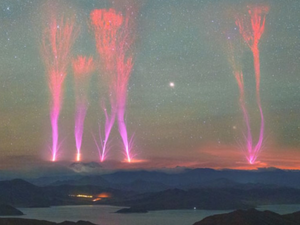
What are gigantic jets
Unlike typical lightning, which primarily travels between clouds and the ground, gigantic jets propel powerful bursts of electrical charge into the lower ionosphere, reaching heights where Earth's atmosphere meets space. Their appearance resembles blue jets at the base and red sprites higher up, yet their formation and triggers remain a subject of ongoing scientific inquiry. Nevertheless, their role in balancing electrical charges within the atmosphere is evident.How gigantic jets are captured on camera
These jets are significant not only for their spectacular visual display but also for their potential impact on space-based technologies. The energy transfer they facilitate could affect satellites in low Earth orbit, communication systems that rely on ionospheric reflections, and radar operations that peer beyond the horizon. While most observations of gigantic jets occur serendipitously, such as sightings by airline passengers or incidental captures by ground-based cameras, their study holds promise for advancing our understanding of fundamental physics and space weather dynamics.Researchers are particularly interested in uncovering how these jets propagate into space from storm cloud tops. This exploration not only enhances our grasp of atmospheric electricity but also aids in assessing the implications of such charge transfers on technological infrastructures reliant on ionospheric interactions. Thus, studying gigantic jets promises insights into both the natural wonders of our atmosphere and the practical considerations for modern communication and satellite technologies.
Read More News on
(Catch all the Business News, Breaking News, Budget 2024 Events and Latest News Updates on The Economic Times.)
Subscribe to The Economic Times Prime and read the ET ePaper online.
Read More News on
(Catch all the Business News, Breaking News, Budget 2024 Events and Latest News Updates on The Economic Times.)
Subscribe to The Economic Times Prime and read the ET ePaper online.









 Get Unlimited Access to The Economic Times
Get Unlimited Access to The Economic Times
